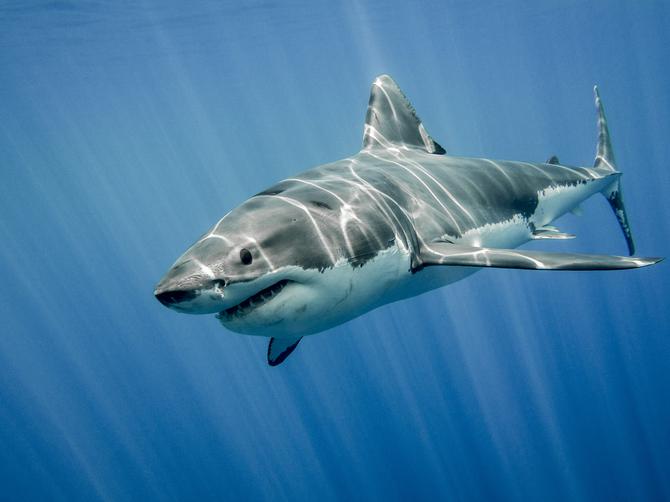Most people
across the globe don’t stop to wonder about the feeding habits of great white sharks
but a team led by Associate Professor Jayson Semmens (Institute for Marine and Antarctic Studies) is researching the predator’s diet in an
effort to understand how sharks interact with their ecosystems.
What
they found contradicted popular belief, which had built around the only
previous study on the topic, conducted 30 years earlier.
The initial study believed that a 30-kilogram meal was enough to sustain a 1-tonne shark for around one and a half months, but the team found that a meal this size would actually only sustain the predator for 12 to 15 days.
“The
great whites’ natural range extends across the globe, making it incredibly
difficult to study, but also incredibly important as they are at the top of the
oceanic food chain,” Assoc Prof Semmens said
“Our study
utilised metabolic rates derived from swimming speed estimates to calculate
their feeding requirements.”

The study also found that great whites appear to choose to be near seal colonies in the spring in order to dine on vulnerable prey in the form of recently weaned seal pups that don’t fully understand the dangers yet.
These seal pups make for slightly easier prey; nevertheless, the great whites expend more energy there patrolling for prey compared to their regular activities.
Great whites are integral in maintaining the balance of the ecosystem; ensuring that other middle-level predators don’t become overpopulated.
However, the
size of the overall population and the trends in growth or decline of the
species are unknown, highlighting the need for further study to ensure this apex
predator does not fall victim to the effects of man.
Keen to dive into a fascinating research project like this? Apply now to become a research student.
Read more Marine, Antarctic and Maritime stories here.